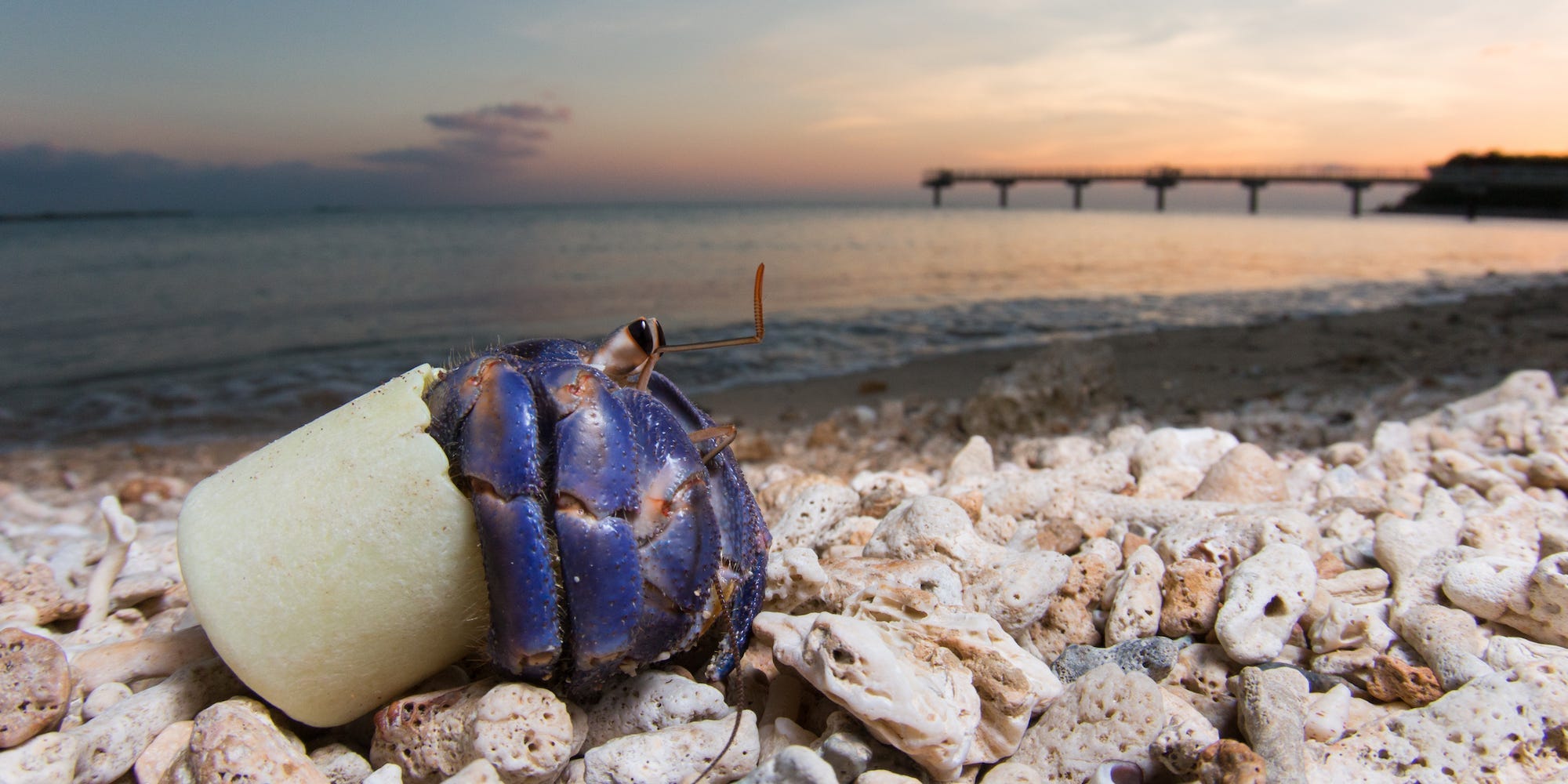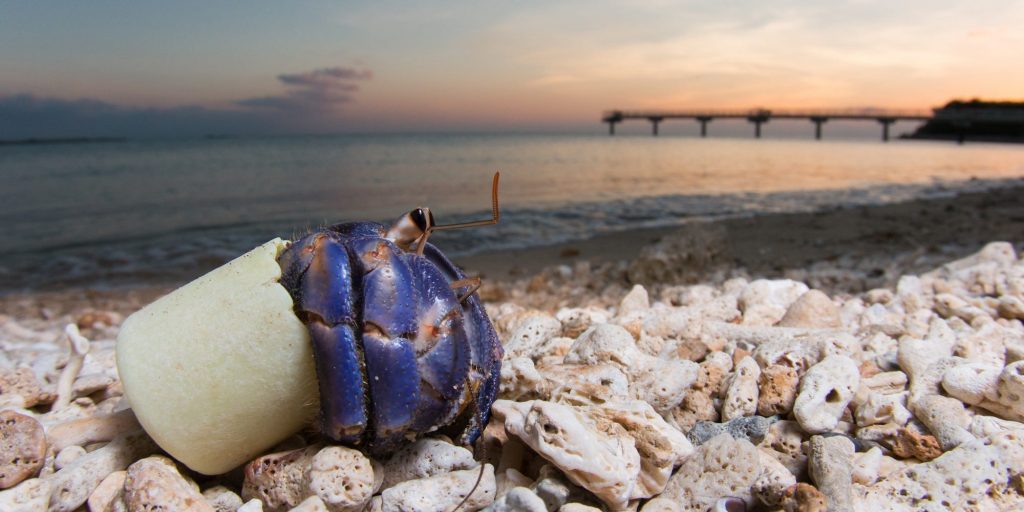
Shawn Miller
- Plastic waste in the oceans is causing "hyperactivity" in hermit crabs, according to a new study.
- But the "exciting" response in the species may have detrimental effects on marine life and its ecosystem.
- Plastic congestion by marine animals can have an array of negative effects, including cancer.
- See more stories on Insider's business page.
Amid the constant barrage of dire climate news and existential environmental dread, one new study from across the pond suggests the ecological crisis may be impacting a common crustacean in a stimulating way.
A team of scientists at England's University of Hull determined that a chemical leaked from plastic dumped in the ocean is eliciting "hyperactivity" in hermit crabs.
The researchers, who are studying how climate change and plastic waste in the ocean impact marine life, studied 40 crabs in waters off the Yorkshire Coast. The team found signs that oleamide, an additive found in plastic that is released into the oceans, is increasing respiration rates among the species' population – an indication of excitement and attraction.
The hermit crabs may be mistaking that plastic waste additive for a similar chemical that is naturally released by the species' food sources, researchers found, which could have harmful effects on the ecosystem.
Jack Greenshields, the lead researcher on the study, told Insider that hermit crabs, who are scavengers, smell the naturally-occurring chemical called oleic acid from decaying corpses, which draws the animals to their food sources. But because oleamide – the additive coming from plastic waste in the ocean – smells so similarly, the hermit crabs may be drawn to the pollutants, falsely thinking it's a food source.
"If they were scavenging for eating purposes, it wouldn't only waste energy, but...they could ingest the actual plastic itself, which could be toxic to the animals," Greenshields said.
He added that plastic congestion by marine animals can have an array of negative effects, including cancer.
In addition to acting as a false feeding cue for hermit crabs, oleamide has also previously been found to be a major component in the sex pheromone of cleaner shrimp, which are distant relatives of the hermit crab. As such, Greenshields said it's possible that the pollutant could also "invoke a sexual response" in the hermit crabs.
The prospect of plastic waste making hermit crabs sexually aroused has sparked widespread media coverage of the study, but Greenshields said the research cannot yet confirm that possibility.
"It's definitely an avenue that could be explored," he told Insider. "But it's not 100%.
Greenshields said the study is only the start for investigating how wide-ranging the problem of plastic truly is in marine environments. He said he hopes to continue looking into the extent of what this oleamide attraction means not just for hermit crabs, but for other marine life as well.
He also emphasized that the public can play a role in eliminating plastic waste in the oceans by not using single-use plastic, pressuring companies to use bio-degradable plastic, and making sure studies like his garner government attention.
